
|
|
|
|
| |
 Region
Overview: The island of Paros Region
Overview: The island of Paros |
|
The island of Paros, with an area of 196 km2 is one of the
most popular tourist destinations in the Cycladic Complex in
Greece, and has a registered permanent population of 12,800
that is increased by as much as 300% during the summer
months. Under this context, the goal of the formulation of
scenarios and strategies for Paros Island is to reconcile
the supply and demand of water, resulting in the coverage of
the domestic demand, while at the same time attempting to
ensure the sustainability of supply and the achievement of
environmental goals for the island, through protection of
the vulnerable groundwater resources.
The rapid development of the tourist industry in the last 30
years made the creation of new infrastructure necessary to
cover the ever-increasing needs of the visitors and the
lodging owners. The little-by-little infrastructure
development was done without proper planning and control,
leading to the problems that the island is facing today,
both economic - offer of accommodation being greater than
demand of accommodation - and environmental - great seasonal
pressures applied on water resources. At the same time, the
agricultural activities that had been abandoned to a large
extent were enhanced by the tourist development, and the
demand for local traditional products (for example local
wines) was boosted, triggering an increase in irrigation
demand.
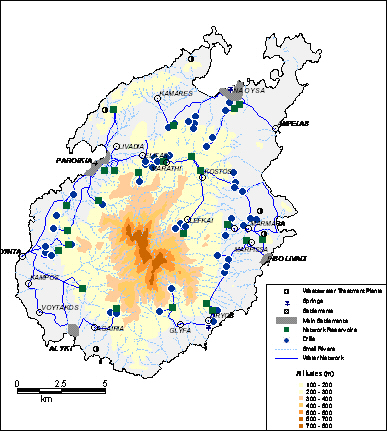
Map 1. Domestic water network in the island of Paros
The water demand growth of the last decades has been
addressed mostly with the construction of extensive water
drillings, both public and private, to supply the domestic
and agricultural sectors. Paros is a typical case where the
water shortage occurs on a seasonal basis. Tourism and
irrigation demand reach their peak during the same time, in
the summer, creating conflicts between uses and problems
with water supply adequacy during peak consumption. Paros
has the potential to combine multiple activities; both
tourism and agriculture can offer a prosperous future for
the inhabitants under suitable planning and control. So far
however, the existing infrastructure is inadequate for
dealing with these issues, and therefore new water
management responses are necessary to cover the shortage. |
|
|
|
|
|
 Step 1: Scenario Formulation
Step 1: Scenario Formulation
|
Formulation of Demand Scenarios
|
Permanent and Seasonal Population
Given the growing economic importance of the tertiary sector and
especially tourism, the formulation of demand scenarios for Paros was
based primarily upon assumptions for permanent and seasonal population
growth. For this purpose, a variety of data and estimations have been
collected and analysed from associations and the local and governmental
authorities, regarding population fluctuations, consumptions, network
losses and unaccounted consumptions.
One important conclusion that was drawn from data cross-referencing
concerned the real permanent population of the island. The registered
population according in the 2001 census was 12,783 inhabitants.
However, during the winter months local authorities estimate that actual
(permanent) residents are only 35% of the recorded, being mostly
permanent employees and farmers or stockbreeders. The rest are either
indigents who live permanently in the mainland and have seasonal
occupations in Paros or people with a second (country) residence that
visit the island for summer vacations.
Two types of seasonal population have also been distinguished: the low
season visitors, mostly families and pensioners who visit Paros during
Easter, May and June, and the peak season tourists (from the mainland
and abroad) who visit Paros during August and constitute the massive
inflow that creates the summer peak of 54,000 visitors. |
The uneven spatial distribution of tourist
population per municipal department is presented in Figure 1.
The municipal departments of Paroikia and Naoussa, with their
traditional settlements and developed tourist facilities and
accommodation, concentrate the largest part (about 70% of the total).
The departments of Marpissa and Agairia, currently under tourism
development, come second with 15 and 10% respectively. Kostos and Leykes
exhibit very small tourism activity, with their total share not
exceeding 5% of the total seasonal population.
Estimation of demand parameters, such as consumption rates and loss
coefficients, was performed using data obtained from the Water Utility
of Paros. Domestic consumption rates, estimated on the basis of real
consumption and excluding losses, were estimated at approximately 130
and 180 l/capita/day for permanent and seasonal population respectively.
The relatively low rates (with respect to the international standards of
200 and 350 l/capita/day) are attributed to the rural character of the
majority of residential population and the conservation campaigns that
have increased the awareness of both inhabitants and tourists on
periodical water stress conditions. Unaccounted for water use was
estimated as the difference between the metered (charged volumes) and
the delivered supply, on the basis of data and estimates provided by the
Water Utility. Average network losses account for about 25% of the
delivered supply volumes.
|
|
|
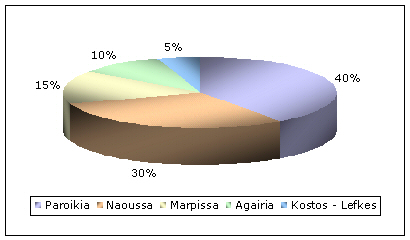
Figure 1. Spatial distribution of seasonal
population
Top |
Demand Projections
The economic development, which began in the 1970’s, resulted in
increasing permanent population growth rates (Table 1).
For identifying a business as usual scenario, it was assumed that during
the period examined (2004 – 2030) the population will continue to
increase with a steady yearly rate equal to the average of the previous
decades. Seasonal population is assumed to follow a similar trend, as
the permanent population increase should be supported by a proportional
economic growth, which is nowadays strongly related to tourism
development.
Table 1. Growth of registered permanent
population (National Statistical Service of Greece)
|
Year |
Registered permanent population |
Yearly Growth Rate (%) |
|
1971 |
7,314 |
- |
|
1981 |
7,881 |
1% |
|
1991 |
9,591 |
2% |
|
2001 |
12,783 |
3% |
Two other scenarios formulated for the period analysed assume that after
a point the island has reached its carrying capacity regarding tourism
development. |
This would be followed by stabilization of population while a more
pessimistic scenario assumes a small decrease of tourism that is
followed by minor emigration trends towards the mainland.
Under this context, three different potential trends were distinguished,
forming the potential scenarios for domestic demand :
-
A scenario where demand increases at a steady rate, equal to that
currently observed, and corresponding to a “business as usual” state
(BAU),
-
A scenario where demand is stabilised after a point in time, in this
case taken to be 15 years after the reference year (Stabilized),
-
A scenario where the demand decreases after a point in time, in this
case taken to be 25 years after the reference year (LD).
The three domestic demand scenarios are depicted in Figure
2.
It should be noted that due to the continuous decline of agricultural
activities, irrigation and animal breeding demands are assumed to be
stable over time and equal to 2.51 and 0.04 hm3 respectively. A
very small quantity (7,000 m3/yr) is exported to the nearby island of Antiparos during the peak months of July and August. |
|
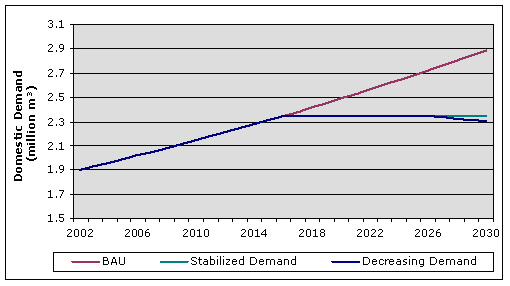
Figure 2. Domestic Demand Scenarios
Top
|
Formulation
of availability scenarios
|
|
The climate in Paros, as in all the islands of the Cycladic complex, is
temperate Mediterranean. The average temperature is 16.5 – 19.5 °C. The
average annual rain height is 480 mm according to the last 50 year
measurements from the meteorological stations of Naxos and Paroikia.
Highest rainfall
values are observed during the winter, while during the summer season,
from May to August, precipitation is very rare, not exceeding 5
mm/month.
The main variable in the formulation of availability
scenarios was the sequence of years with respect to rainfall. Sequences
that were developed and entered in the WSM DSS were composed of average,
wet (values in the top 30 percentile of observed) and dry years (values
in the bottom 30 percentile of observed). |
The hydrological scenarios that were used reflected:
-
a period of 30 years with a high frequency of dry years (HD),
-
a period of 30 years with a high frequency of wet years (HW),
-
a period of 30 average water availability years, which signifies the
assumption of standard water availability, reflecting the baseline
scenario (Normal).
The three availability scenarios are depicted in Figure 3. |
|
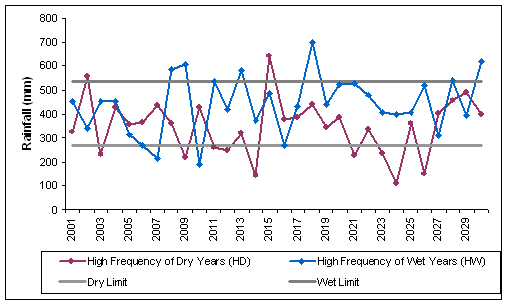
Figure 3. Water Availability Scenarios
Top
|
Combinations
of hydrological and demand scenarios - Results
|
|
In order to be able to assess the behaviour of the water system under a
best case scenario, a worst case scenario and a business as usual
scenario as intended, the combinations of availability and demand
scenarios under which the different management options have been
evaluated were the following:
-
A combination of high demand with a high frequency of dry years (BAU+HD),
reflecting the worst case scenario of water shortage,
-
A combination
of reduced demand with a high frequency of wet years (LD+HW),
reflecting the best case scenario, and
-
A combination of high demand
with a series of average years (BAU+Normal), in an effort to reflect
the current trends of the system in a “business as usual” context.
Figure 4
presents the overall domestic deficit under the three scenarios. From
the temporal and spatial variation of domestic shortages throughout the
island, the following are concluded:
-
Groundwater exploitation is very high mainly due to the irrigation
activities of the area, facilitating the advance of the sea intrusion
front. During recent years efforts have been made to limit groundwater
abstractions to sustainable levels and enhance the Naoussa aquifer
through the construction of small interception dams.
|
-
The exploitation of the aquifer of
Agairia at the southern part of the island is rather low. The
hydrogeological survey of the island has concluded that, due to the impermeable geologic
structures, further exploitation is possible without endangering the
water balance of the area.
-
The municipal department of Paroikia
and the towns of Marpissa and Piso Livadi face permanent water
deficiency. This is due to the large tourist influx in those areas and
the limited available groundwater resources. Aquifers supplying those
areas are on the verge of overexploitation.
-
The current desalination capacity is
adequate to meet both residential and tourist water needs of the town Naoussa up to 2023. However, the rest of the municipal department,
mainly supplied through boreholes, faces small water shortage problems.
-
The municipal department of Arhilohos
faces small, periodic water shortages, aggravated by seasonal droughts.
-
The municipal departments of Agairia
and Leykes do not face deficiency for the entire simulation period.
In all cases peak shortages are observed during the month of August
when both domestic and irrigation requirements reach their peak.
|
|
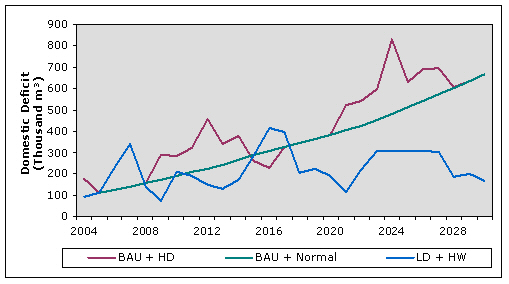
Figure 4. Estimated domestic deficit under
the selected demand and availability scenario combinations
Top
|
 Step 2: Identification of Options
Step 2: Identification of Options
|
The potential policy options identified in the course
of the WSM Project were subsequently analysed in their applicability to
each region through consultation with the local stakeholders. As
expected, for Paros all locals proposed different approaches to water
resources management, according to their different targets and economic
interests. A detailed presentation of the opinion of
stakeholders and decision makers has been presented in
Newsletter 3.
For the Municipality of Paros, water management should
concentrate mainly on supply enhancement through structural
interventions, such as boreholes, interception dams and desalination.
The fundamental target of all strategic approaches is to adequately meet
the domestic and irrigation needs, without however incurring additional
costs to consumers. For this purpose, large-scale infrastructure should
be financed by the government. Ultimately, such a strategy would lead to
the promotion of the local tourist industry while at the same time
keeping the public satisfied.
|
Although under the control of the Municipality, the perception of the
Municipal Office of Water Supply and Sewerage (the local Water
Utility) is quite different. They hold the opinion that new measures
should concentrate on the more efficient use of water resources, through
technological adjustments, conservation campaigns and regulation of
groundwater abstractions. They as well recognize the necessity for
structural interventions; they would like however to promote more
technical solutions, such as desalination, without abandoning the
traditional practices of groundwater exploitation.
The Union of Agricultural Associations and the Union of Hotel Room
Owners have similar points of view. Both consider that an expansion of
desalination capacity would be an efficient solution for dealing with
the water scarcity problems. They are increasingly aware of the limited
available supply and recognize the benefits of technological adjustments
and rationalization of water usage.
A synthesis of the current management policies, the perceptions of the
local stakeholders, and of additional, imposed instruments applicable to
Paros island is presented in Figure 5.
|
|
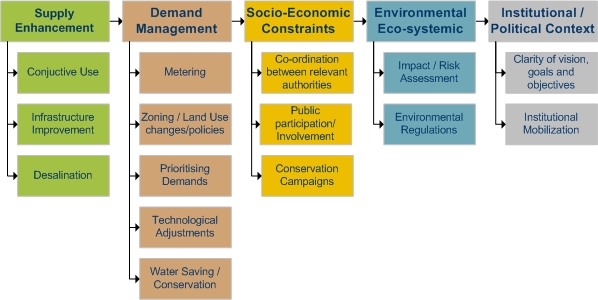
Figure 5. Summary of management options
Top
|
 Step 3: Analysis of the different options
Step 3: Analysis of the different options
|
Of the proposed instruments only a number can be modelled through the
WSM Decision
Support System. The rest, expressing the governance and capacity
building mechanisms (e.g. institutional mobilization, clarity of
vision), are to be examined at a later stage of the project, during the
Protocol Development Stage. Examined options pertain to three major
categories:
Structural options, mainly oriented towards supply enhancement, including:
-
Network
Unifications, aiming at the integration of the fragmented water
networks of the island;
-
Desalination unit(s) construction, to provide
additional water supplies particularly during the peak consumption
periods;
-
New Boreholes, in areas where groundwater exploitation is
below the sustainable level;
-
Storage Reservoirs (and interception
dam) construction to provide a means of storing run-off during low
consumption periods to be used later;
-
Reduction of Network Losses, through replacement of old and
damaged piping in the island towns (structural intervention).
|
Demand management options,
including:
Socio-economic measures in the form
of adjusted Pricing aiming to examine to what extent a difference
of pricing structures would influence demand and abstractions for
domestic and
irrigation water use.
The detailed analysis of the different options is presented in the
pertinent paragraphs (Click on each option to view the respective
analysis).
|
|
Top
|
 Step 4: Overall Evaluation
Step 4: Overall Evaluation
|
|
The final selection of instruments to be further examined during the
Strategy Formulation Phase depends on the performance of the options
examined regarding the indicators that were presented and analysed for
each option in Step 3.
Results are summarized in Table 2. The effectiveness of each option is
approached through the evaluation score obtained by the WSM DSS, from
the performance with respect to domestic and irrigation demand coverage,
assuming a weight of 0.5 for each indicator, and a satisfactory range of
values from 80 to 100%. |
Environmental sustainability is expressed through the total
environmental cost for each option, associated with pollution generation
and unsustainable groundwater abstractions. It should be noted that the
major environmental problem faced by water management authorities in
Paros lies in the overexploitation and salinisation of aquifers.
Economic efficiency, the ability to produce more with less, is expressed
through the total direct cost, expressed in present value terms.
|
|
Table 2. Final evaluation of instruments
|
|
The normalisation of the results obtained in Table 2 under a scale
ranging from 0 to 5 yields the results presented in Table 3.
From the normalised matrix presented in Table 3 it is obvious that a new
strategy for Paros cannot rely on the application of a few instruments
only. Desalination seems to occupy an advantageous position in terms of
technical, economic and environmental sustainability. However, the very
high cost associated with the option and technical limitations which do
not allow for the installation of a capacity exceeding 5,000 m3/d,
renders the “massive” application of the option impossible. If a
strategy that is developed relies predominantly on desalination, it
should also incorporate measures to improve efficiency of domestic and
irrigation uses and to promote conservation of the island’s vulnerable
resources. |
Required installed capacity can also be decreased if the option is
combined with small-scale structural interventions that can improve the
use of existing resources. Those are network unifications, the storage
reservoir that is proposed at Vrontas, and a reduction of network
losses.
It therefore becomes apparent that in the scope of integrated water
resources management, in addition to the common practice of supply
enhancement-based approaches, we need to examine strategies
incorporating “softer” measures. In doing so, we can maximise efficiency
improvements in the water network with minimal cost, effected through
demand management, public participation and awareness, and incorporate
complementary supply enhancement methods to ensure adequacy of supply
where necessary. |
|
Table 3. Normalised option performance matrix
|
|
|
|
|
|







